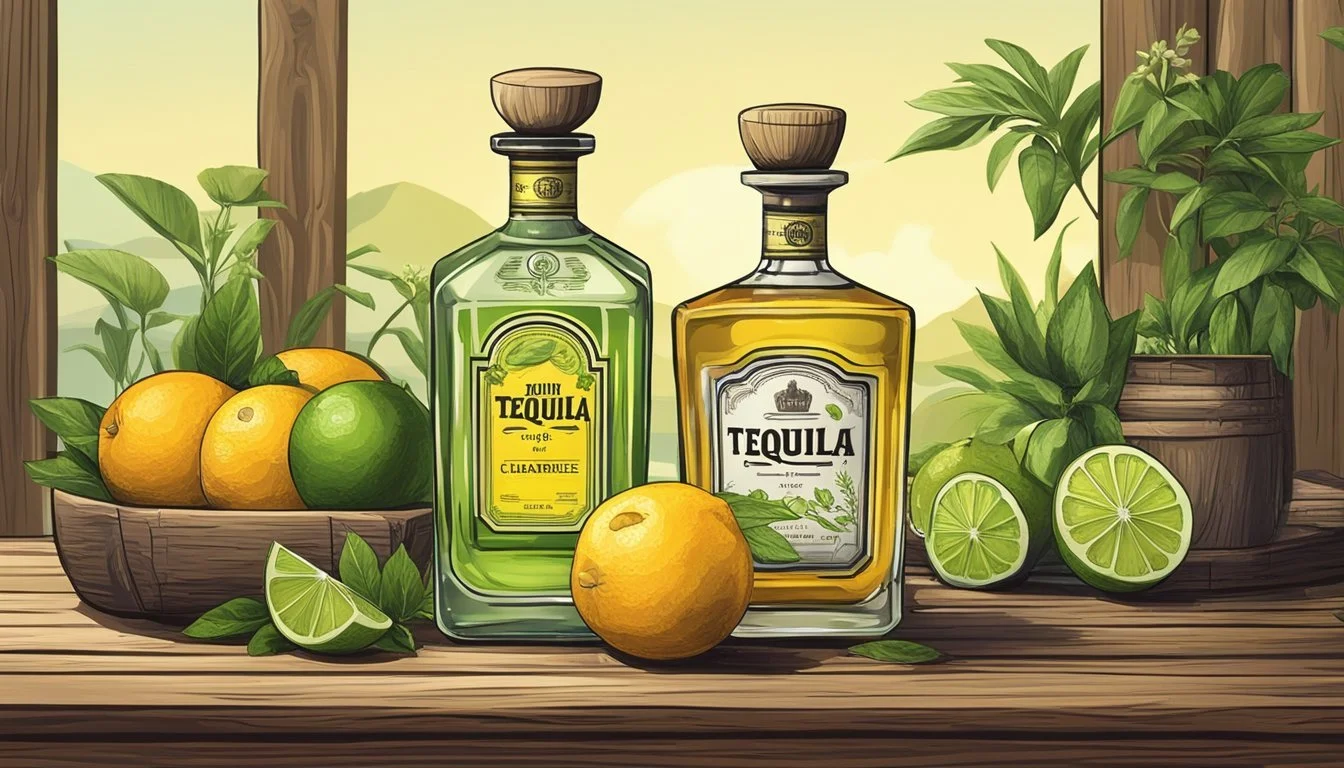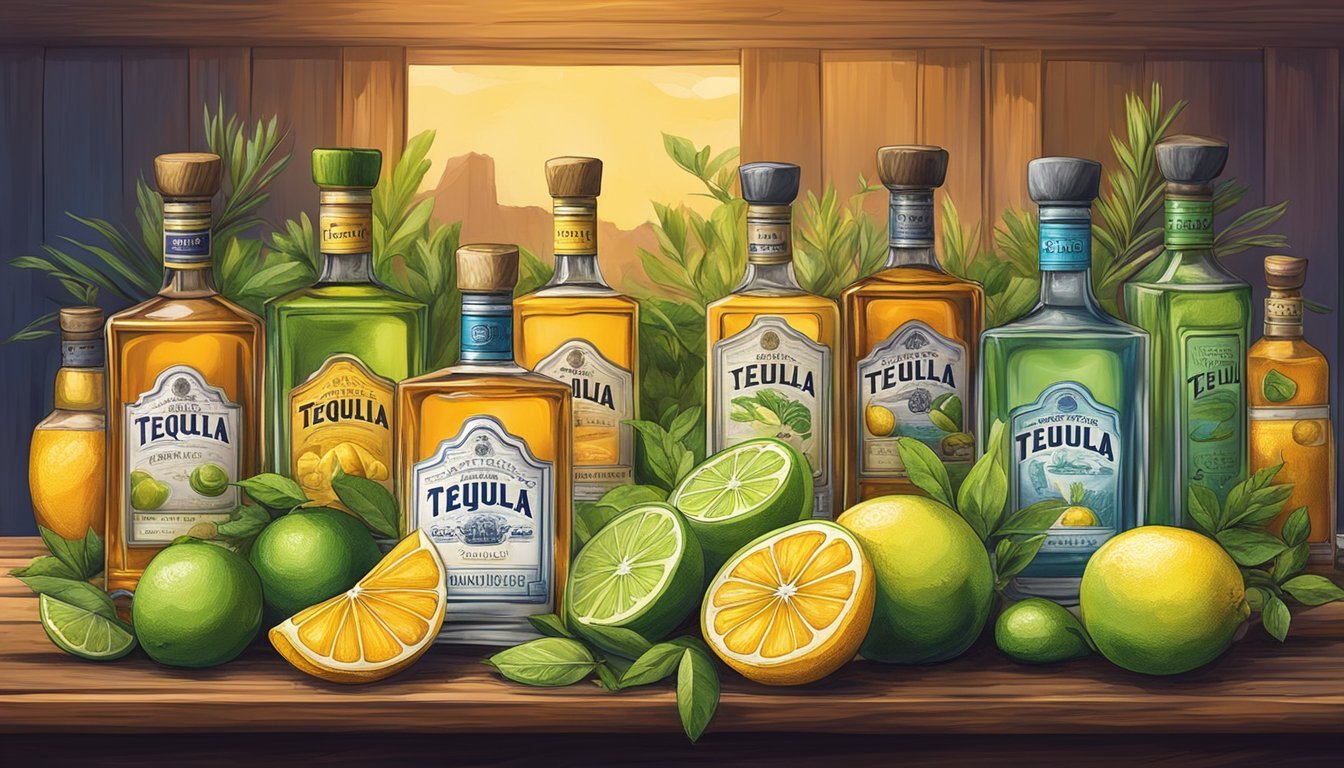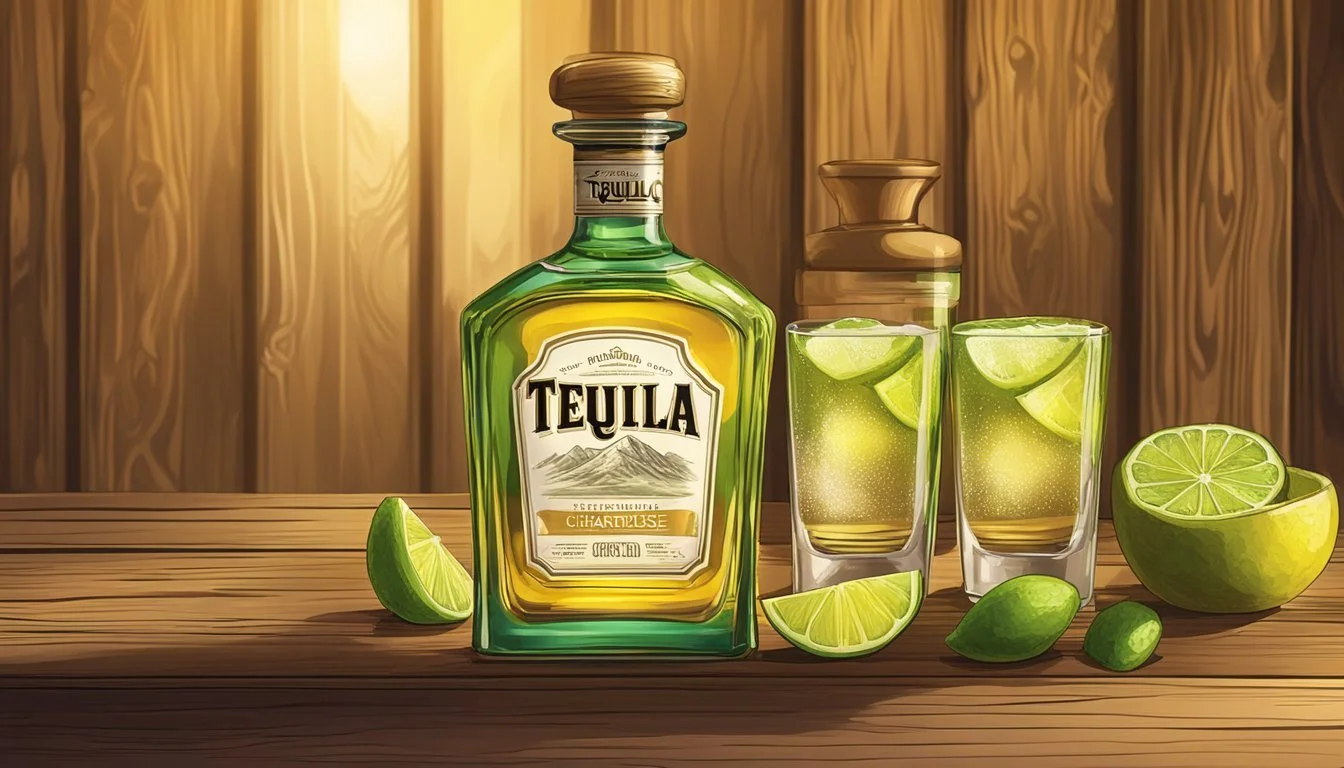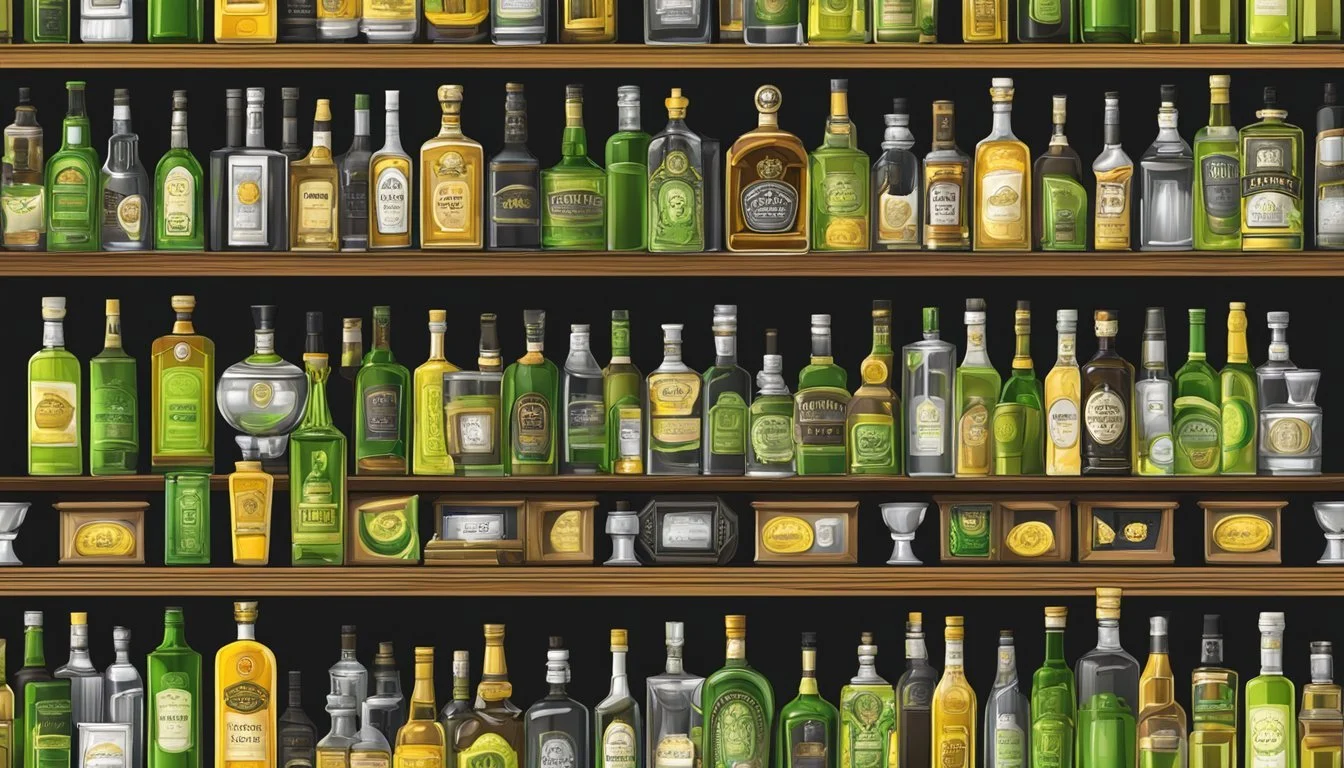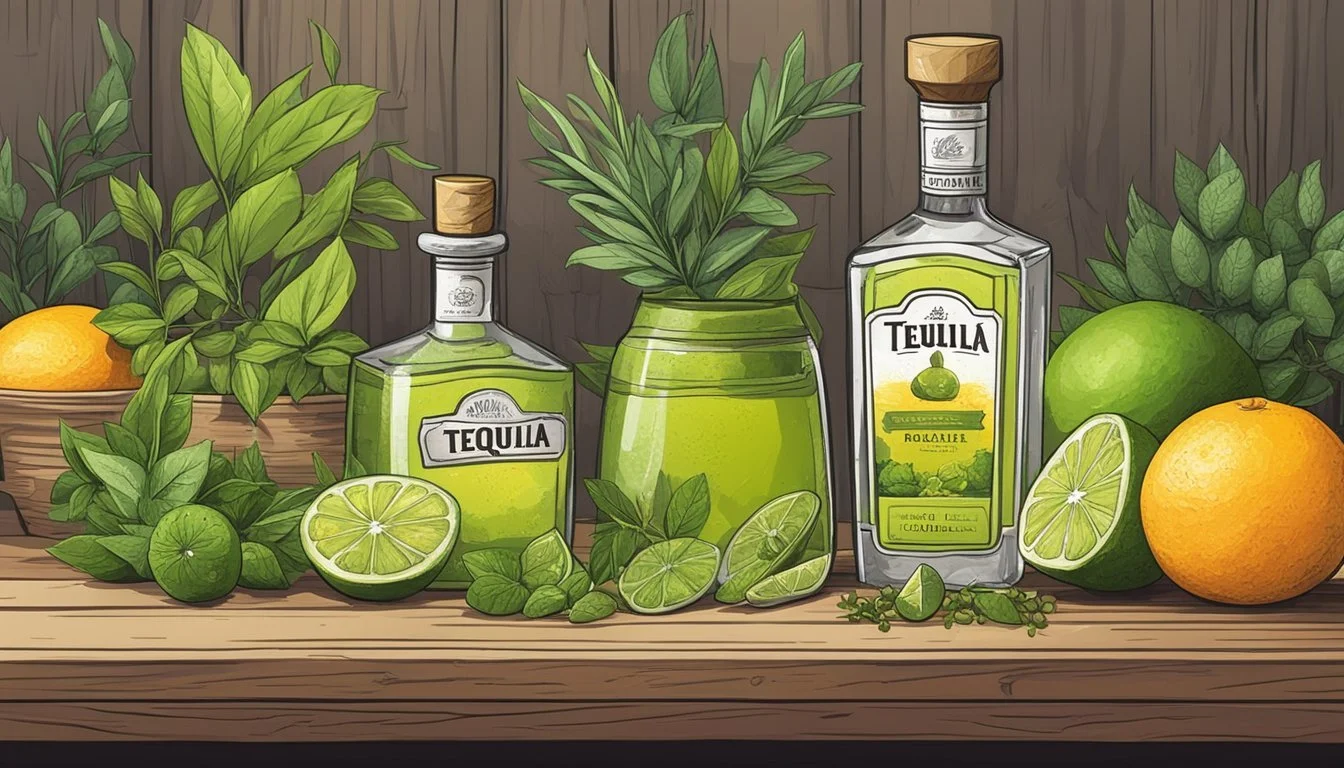Tequila and Chartreuse
Unveiling the Texas Bartender's Secret Weapon
In the dynamic world of bartending, the quest for novel and exciting flavor combinations is unending. Texas bartenders, known for embracing bold flavors and innovation, have recently spotlighted a combination that may come as a surprise to many: tequila and Chartreuse. This duo might seem unlikely at first glance, but upon closer inspection, it reveals a complexity and versatility that savvy bartenders can exploit to create an array of unique cocktails. Silver tequila, with its clear, crisp profile, provides a canvas for the potent herbal punch of green Chartreuse, making for a vibrant and memorable mix.
While Chartreuse, a French liqueur, boasts a storied history with its monastic origins and myriad botanical components, it has found a new lease on life in the heart of the Lone Star State. Swirling together the robust, earthy tones of this herbal liquer with the fiery spirit of tequila leads to concoctions that are both unexpected and harmonious. The high proof of green Chartreuse cuts through the agave-forward flavor of tequila, creating a layered drinking experience that commands attention and curiosity.
Across Texas, bartenders are harnessing the tequila and Chartreuse pairing not only for its boldness but also for its versatility. The combination serves as a secret weapon for crafting drinks that range from the stirring and sophisticated to the shaken and effervescent. Whether it's giving a Southwestern twist to classic Chartreuse-filled recipes or concocting entirely new libations, this pairing has proven its worth by enabling bartenders to push the boundaries of cocktail creation.
The Origins and History of Tequila and Chartreuse
Both tequila and Chartreuse hold deep historical roots that have transformed them from regional specialties to prominent staples in the bartending world. The former is an expression of Mexican culture distilled from agave, while the latter is a French concoction steeped in monastic mystery and an array of herbs.
Tequila: From Agave to Aroma
Tequila's story begins with the Aztecs who fermented agave sap to produce a beverage called pulque. Post Spanish conquest, Europeans began distilling the agave, giving birth to a new spirit. By the 16th century, the region now known as the state of Jalisco saw the establishment of the town of Tequila, which became a production hub. The spirit evolved from a local mezcal wine into what's now recognized as tequila, a name officially used following its first exports. It wasn't until the 20th century that tequila gained global fame for its unique flavor profile crafted from blue agave.
Key Dates:
1000 B.C. - A.D. 200 A.D.: Agave fermentation by Aztecs
Late 16th Century: Tequila production spreads in Jalisco
Chartreuse: Elixir of Long Life to Modern Mixology
Chartreuse's inception dates back to 1605, when Carthusian monks in Vauvert, near Paris, received a manuscript detailing an "Elixir of Long Life". The document contained a recipe using 130 herbs, and its complexity meant that initially, it was not fully understood. However, by 1737 at the monastery in Voiron, the monks developed the recipe into Green Chartreuse. The French Revolution and subsequent expulsion of the Carthusian Order led to the secret recipe being sold and later reclaimed. Today, Green and Yellow Chartreuse remain a legacy, crafted in the herb room of the monastery, their botanical composition a zealously guarded secret embraced by bartenders.
Chartreuse Varieties:
Green Chartreuse: 55% ABV, more potent and complex
Yellow Chartreuse: 40% ABV, milder and sweeter
Each spirit's history is marked by cultural shifts and historical events, yet they converge in the art of mixology as essential ingredients that add depth and history to every cocktail they grace.
The Art of Bartending with Tequila and Chartreuse
In the crafted ambiance of a Texas bar, bartenders combine the agave-forward zing of tequila with the botanical complexity of Chartreuse to create a symphony for the senses. Here's how expert bartenders harness these ingredients for show-stopping cocktails.
Crafting Unique Cocktails
When bartenders mix tequila and Chartreuse, they create cocktails that are both innovative and captivating. A popular drink in this category is one that pairs silver tequila with green Chartreuse, adding lime bitters for a citrusy punch. The method of combining—whether shaking for a chilled, aerated texture or stirring for a smooth, undiluted sip—depends on the desired outcome of each cocktail.
Method: Shaking/Stirring
Typical Ingredients:
Silver Tequila (1 1/2 ounces)
Green Chartreuse (1 1/2 ounces)
Lime bitters (4 dashes)
Ice
The precise layering of flavors achieved through the measured inclusion of these ingredients gives rise to a distinctly unique menu offering that is bound to intrigue.
Incorporating Flavors and Aromas
Tequila and Chartreuse together offer a wide palette of tastes and smells. The vanilla and chocolate notes of aged tequila can be complemented by the medicinal and herbal qualities of Chartreuse. Bartenders often introduce citrus elements like lemon or lime to lend a fresh zing and balance the sweetness or bitterness.
For instance, a cocktail may include:
Base: Rye whiskey (for added depth)
Herbal: Chartreuse
Sweet: Honey syrup
Citrus: Fresh lemon juice
Balancing these ingredients requires skill, as the fragrant bouquet of Chartreuse with its over 130 herbs offers a fluid canvas that interacts differently with each type of tequila.
The Role of the Bartender in Cocktail Innovation
The bartender's role extends beyond simple mixology—they are the architects of the drink's ultimate profile. Their innovative spirit can turn a traditional recipe into a signature cocktail that defines a bar's character. Constantly experimenting and educating themselves on each element's properties, they are pivotal in setting and anticipating new trends.
They consider:
Aroma: How the nose of a cocktail invites the patron before the first sip.
Visual Appeal: The presentation and garnish that catch the eye.
Taste: The balance of flavors and how they evolve on the palate.
Whether it’s tweaking the ratios or introducing a new technique, these bartenders take pride in their craft, making each cocktail an experience to remember.
Signature Cocktails: Tequila and Chartreuse Classics
Tequila and Chartreuse come together in a few timeless cocktails that showcase their versatility and depth. These range from Prohibition-era classics to modern twists on old favorites.
The Last Word and Its Variations
The Last Word is a Prohibition-era cocktail that has surged in popularity thanks to its perfect balance of flavors. Originally the cocktail consists of equal parts gin, green Chartreuse, maraschino liqueur, and lime juice. Variations, like The Final Say, swap gin for tequila, adding an agave twist to the complex herbal and citrus profile.
Tequila-Based Mixes: Beyond the Margarita
The Margarita may be the most well-known tequila cocktail, but bartenders often reach for tequila to give a unique kick to other classics. For instance, replacing whiskey with tequila in an Old-Fashioned can surprisingly complement the bitter notes with the spirit's natural sweetness. Additionally, the Paloma remains a beloved classic, where tequila’s character is brightened by the fizz of grapefruit soda.
Innovative Chartreuse Concoctions
Innovators behind the bar have boldly infused Chartreuse into various templates. Taking cues from classics like the Sazerac and Manhattan, mixologists have created drinks like the Greenpoint, where rye whiskey and yellow Chartreuse mingle with a dash of bitters. For those inclined towards a gin base, a Corpse Reviver #2 can be given a Chartreuse kick, enhancing its herbal range while staying true to its revitalizing intentions.
Perfect Pairings: Tequila and Chartreuse in Harmony
In the realm of mixology, the duo of tequila and Chartreuse comes together to create cocktails that are both vibrant and complex. Here's how these ingredients work in unison to delight the palate.
Complementary Flavors for Enhanced Experiences
Tequila and Chartreuse possess a unique symbiosis, with their flavors complementing each other in ways that bring out the best in both. Tequila, with its earthy and sometimes spicy profile, finds a refreshing counterpart in the herbaceous and slightly sweet taste of green Chartreuse.
Tequila: Often presents notes of pepper, earth, and a signature agave sweetness.
Green Chartreuse: Delivers a complex blend of 130 herbs and plants, offering a slightly sweet yet pungent flavor that's unmatched.
Common flavor pairings include:
Lime Juice: Tequila's citrus harmony elevates the herbaceousness of Chartreuse.
Pineapple: Offers a sweet, tropical counterbalance to the duo's intensity.
Pear: Adds a mellow, fruity sweetness that complements the boldness of tequila and the floral notes of Chartreuse.
Using ingredients like mint for freshness or ginger for a zesty kick can further enhance these combinations, providing a multi-dimensional tasting experience.
The Chemistry of Mixing Tequila and Chartreuse
The chemistry between tequila and Chartreuse unveils the potential for a vast spectrum of cocktail experiences. Tequila's versatility allows it to pair neatly with the multifaceted nature of Chartreuse, whether with a blanco tequila that underscores the freshness or an añejo that aligns with the botanical liqueur's complexity.
Blanco Tequila: Bright and crisp, showcases the intense freshness of Chartreuse.
Añejo Tequila: Its oak-aged character intertwines with Chartreuse's mellow sweetness, often revealing undertones of cacao and vanilla.
The cocktails crafted from this pairing are both innovative and timeless, striking a balance that pleases adventurous drinkers while staying rooted in classic mixology. Through expert blending, bartenders can manipulate these ingredients to create a vast array of flavors ranging from soothingly mellow to boldly spicy, all while maintaining a distinctive herbaceous thread that defines this iconic duo.
Advanced Mixology Techniques
In crafting cocktails that blend Tequila and Chartreuse, precision and innovative ingredients set apart exceptional drinks. Bartenders leverage advanced techniques to ensure each concoction delivers a memorable experience.
Precision in Measurement and Mixing
Precision is paramount when mixing spirits like reposado tequila, known for its nuanced flavor after resting in oak barrels. Exact measurements ensure the intended profile of each ingredient shines through. A typical mix might be:
1 1/2 ounces reposado tequila: Brings warm, oaky notes.
1/2 ounce green Chartreuse: Adds herbal complexity.
For bitters, a few dashes suffice; overuse can overpower subtler flavors. For instance:
Orange bitters: Complements the agave's sweetness.
Celery bitters: Lends a fresh vegetal note, pairing well with the earthiness of tequila.
Aromatic bitters: Introduces a spectrum of spice and depth.
Mixologists often employ a combination, like four dashes of lime bitters to bring zest and tie flavors together. Stirring with cracked ice chills the drink without diluting it as quickly as smaller ice would, preserving the taste balance.
Utilizing Special Ingredients
Special ingredients can elevate a tequila and Chartreuse cocktail from good to remarkable. Mixologists may infuse spirits with habanero to bring a controlled but fiery kick to their creations. Here’s a sample ingredient list:
Chartreuse: The herbal liqueur that adds layers of flavor.
Reposado tequila: Chosen for its smoothness and subtle woodsy character.
Bittermens Xocolatl Mole Bitters: A couple of drops provide a unique chocolatey spice that complements the herbal notes of Chartreuse.
Seasoned bartenders appreciate Chartreuse's versatility and often experiment with this liqueur when creating specialty cocktails, considering its strong herbal flavor as a counterbalance to sweet or spicy ingredients. They may also vary the types of agave spirits used, switching from a clean, crisp silver tequila to a more mature reposado to adjust the flavor profile.
The Cultural Impact of Tequila and Chartreuse
In the dynamic world of spirits, tequila and Chartreuse hold distinct places in cultural traditions and economic significance, reflecting their origin stories from Mexico and France, respectively.
Tequila and Chartreuse in Popular Culture
Tequila, emerging from the heart of Mexico, has transcended borders and imbued itself into global popular culture. Mexican filmmakers, musicians, and writers frequently depict tequila as a spirited emblem of national identity, with its presence in films and songs reinforcing its cultural weight. Celebrations and references to tequila are rife within the media, connecting audiences to its deep Mexican roots and the historic process involving agave, the cornerstone of its creation by the local communities.
Chartreuse, with its French monastic origins tied to the monks of La Grande Chartreuse, has been a fixture in apothecary lore and cocktail innovation. This herbal liqueur, once a medicinal elixir, now graces modern pop culture through its inclusion in craft cocktails, nodding to both its rich heritage and contemporary versatility.
Impact on Local Economies and Community
Tequila, originating from the state of Jalisco, has a significant economic footprint in Mexico. The spirit supports local agriculture and boosts tourism through tequila-tasting tours and festivals.
Local Agriculture:
Primary crop: Agave plants
Harvesting: Creates farming jobs
Tourism:
Festivals: Drives cultural tourism
Distilleries: Promote educational visits
Chartreuse's production sustains a vibrant economic enclave around the French Alps. The monks' careful craftsmanship directly influences the surrounding community with employment, from the distillation to the global distribution network.
Community Investment:
Employment: Provides jobs in artisanal craft
Heritage: Maintains historical practices
Both spirits serve as a testament to their individual cultural heritages, enriching and sustaining their local communities through continual reverence and consumption on a global scale.
Guide to Curating Tequila and Chartreuse Selections
Selecting tequilas and Chartreuse liqueurs for a bar setting involves understanding the unique qualities of each spirit. A bartender should aim for a range that caters to various tastes and cocktail requirements.
Building a Diverse and Dynamic Collection
When curating a selection of tequila, one must consider the wide range of agave spirits available. Reposado and Añejo tequila, like Tres Generaciones, offer distinctive oak cask flavors, while a Tapatio Blanco provides a clear, crisp profile ideal for lighter cocktails. As for Chartreuse, a balance between the potent green variety and the milder yellow Chartreuse enables versatility in cocktail crafting.
Tequilas to consider:
Blanco (unaged): Tapatio Blanco
Reposado (aged 2-12 months)
Añejo (aged 1-3 years)
Extra Añejo (aged over 3 years)
Chartreuse selections:
Green Chartreuse: bold, intense flavor, higher ABV (55%)
Yellow Chartreuse: smoother, honeyed sweetness, lower ABV (40%)
Storage and Preservation Tips
Proper storage is vital for maintaining the quality and flavors of tequila and Chartreuse. Tequilas should be stored upright to minimize contact with the cork, which can alter the taste over time. They are best kept in a cool, dark place to prevent deterioration from light and heat. Similarly, Chartreuse liqueurs, despite their high alcohol content, should be kept away from direct sunlight and at a constant temperature to preserve their complex herbal profile.
Tequila:
Store upright
Keep in cool, dark conditions
Chartreuse:
Avoid direct sunlight
Responsible Consumption and Creative Endeavors
In the world of spirits, innovation often goes hand-in-hand with a commitment to responsible drinking. This section explores how Texas bartenders blend the robust flavors of tequila and Chartreuse into enticing drinks while promoting safe consumption practices and culinary creativity.
Promoting Safe Drinking Practices
Texas bartenders are well aware that the strength of cocktails can vary, especially when combining potent spirits like tequila and green Chartreuse. They advocate for moderation and education, ensuring customers understand the ABV (alcohol by volume) of their drinks and the importance of pacing themselves. It is common to see these professionals lead by example, serving water alongside cocktails and informing patrons about the effects of alcohol.
Chartreuse and Tequila in Culinary Creations
Chartreuse and tequila go beyond shots and simple mixed drinks; they are also a foundation for culinary experiments in the cocktail scene. Innovative bartenders incorporate these spirits into:
Cocktails: Complex mixtures where green Chartreuse's herbaceous notes complement the earthy tones of tequila, balanced with citrus to cut through the richness.
Hot Chocolate: An imaginative spin on classic hot chocolate, where a dash of Chartreuse adds a warming, aromatic dimension.
Challenge-Based Drinks: Bartenders often craft cocktails that challenge the palate, blending tequila and Chartreuse with unexpected flavors.
By respecting the strength of their ingredients and combining them in creative ways, Texas mixologists not only craft delightful drink experiences but also encourage a culture of responsibility and enjoyment.
Future Trends in Tequila and Chartreuse Mixology
The mixology landscape is constantly evolving, and the combination of tequila and Chartreuse is indicative of this progress, mixing tradition with innovation. Bartenders, such as Tim Master, known for his expertise in Chartreuse, champion these ingredients for their versatility. Tequila's growth, projected to even surpass vodka in market value, illustrates its increasing prevalence in the cocktail scene.
Bold Flavors and Contrasting Notes
Mixologists are experimenting with tequila and Chartreuse because they both offer bold and distinct profiles. Tequila's earthy, sweet agave contrasts with Chartreuse's herbal complexity, providing a unique playground for flavor innovation. Expect to see cocktails that:
Highlight the vegetal notes of silver tequila with the freshness of green Chartreuse.
Balance the sweetness of aged tequila with the spice and complexity of yellow Chartreuse.
Rethinking Classics
Creative professionals like Jim Meehan are known for reimagining classic cocktails. The marriage of tequila and Chartreuse has led mixologists to:
Reinvent time-honored drinks with these components, potentially offering a new twist on margaritas or palomas.
Create bespoke bitters or infusions that complement the duo's characteristics.
Simplifying Sophistication
As the audience becomes more discerning, there's a trend toward simplifying the cocktail menu, providing an elevated experience with fewer ingredients. Here, the inherent characters of tequila and Chartreuse shine, allowing each to speak for itself in the glass.
Future trends suggest that mixologists will continue to explore this duo with respect for their individualities, yet creating harmonious combinations that are both innovative and approachable.
Closing Remarks
The marriage of Tequila and Chartreuse in a bartender's arsenal showcases a versatile and dynamic approach to cocktail creation. Texas bartenders have found that the herbal complexity of Green Chartreuse complements the earthy tones of Tequila, offering a unique flavor profile that can transform traditional recipes into innovative concoctions.
Distinctive Creations:
A Texas bartender might shake up a Closing Argument Cocktail, blending the smokiness of mezcal with the herbaceous kick of Green Chartreuse.
The straightforward mix of silver Tequila with Green Chartreuse, accented by lime bitters, exemplifies simplicity and balance.
Chartreuse's Dual Nature:
The higher ABV and intense flavor of Green Chartreuse is tempered when paired with Tequila.
Yellow Chartreuse, with its mellow sweetness, offers an alternative for those seeking a softer touch.
In the wake of a Chartreuse shortage, Texas bartenders have become adept at finding innovative solutions. They have demonstrated that a well-crafted cocktail can still be achieved with alternative ingredients, yet the uniqueness brought by Chartreuse remains unmatched.
Bartenders in Texas and beyond continue to view Tequila and Chartreuse as a go-to combination. Their use in cocktails stands testament to the adaptability and creativity of these professionals. Whether in a stirring glass or a shaker, these ingredients are the bartender's secret weapon, guaranteeing a memorable experience for the palate.

